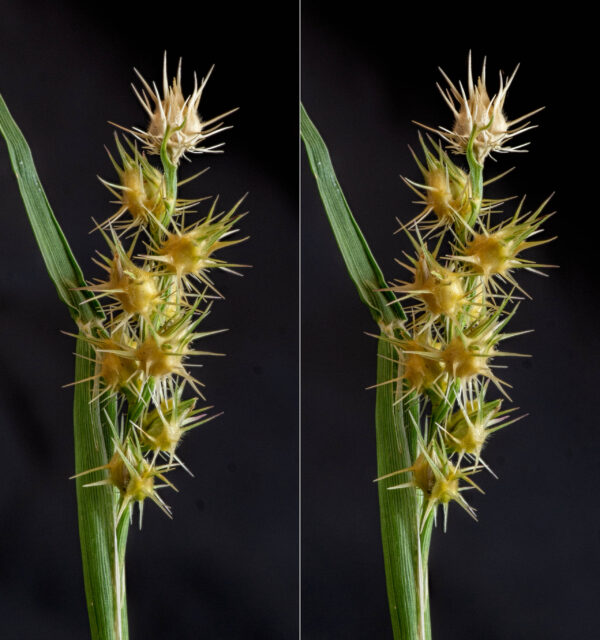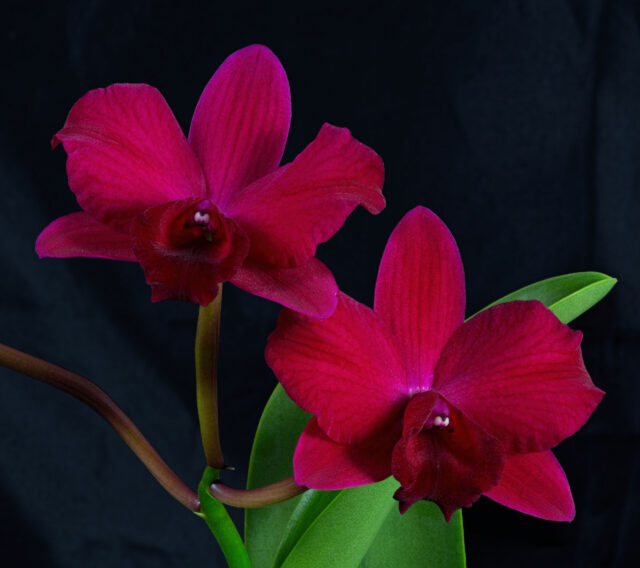Cenchrus longispinus, one of my least favorite grasses, is abundant in lawns and along paths. All the spines on the nutlets are quite sharp, and they are covered with microscopic barbs. They readily catch on socks and penetrate skin and are painfully hard to remove. The photo above of the vicious little plant is a crossview stereo picture, with the right-eye image on the left and vice-versa. If you cross your eyes, you can see the menacing thing in three dimensions. It’s easier to do than to explain how; this is as good a guide as any.
Once you get the hang of it, you can try the very red orchid:
I did some research on the parents. Potinara “Higher Multiplier” turns out to be a Rhyncholaeliocattleya, and Sophrolaeliocattleya “Virginia Dickey” a Cattleya. That would make my plant a Rhyncholaeliocattleya, mostly Cattleya, but with a bit of Rhyncholaelia (formerly Brassavola) in its ancestry.
Here’s a plain picture of the plant for those who prefer not to cross their eyes:




My old father, a native of Upstate New York, called these “sand-burrs”. When I used this term in the South Texas of my youth, I was roundly mocked. Everybody there just called them “stickers”. And yes, I hated them, too. I knew to within an inch which parts of my yard I could tread barefoot and which not.